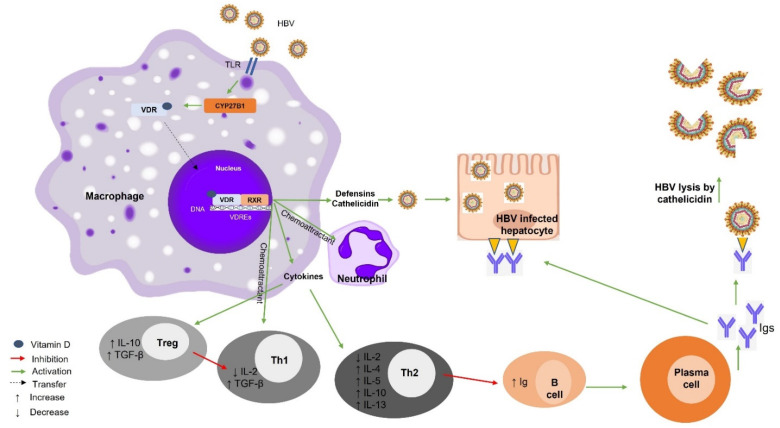Figure 1.
Vitamin D–VDR-mediated effects on hepatitis B infection. Binding of HBV to TLR leads to increased vitamin D production and CYP27B1 stimulation. Binding of VDR to RXR and their recruitment to VDREs leads to the secretion of defensins, cathelicidins, and cytokines. The expression of these immunomodulators leads to the transition from a pro-inflammatory response mediated mainly by Th1 cells and antibody production to an anti-inflammatory response mediated mainly by Tregs and Th2 cells. HBV, hepatitis B virus; TLR, Toll-like receptor; VDR, vitamin D receptor; RXR, retinoid X receptor; VDRE, vitamin D response element; Th1, T helper 1; Th2, T helper 2; CYP27B1, cytochrome P450, family 27, subfamily B, polypeptide 1; Tregs, T regulatory cells; Ig, immunoglobulin; IL-, interleukin; TGF-β, transforming growth factor beta.

